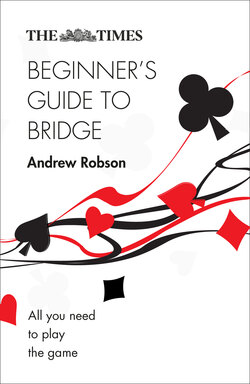Читать книгу The Times Beginner’s Guide to Bridge - Andrew Robson - Страница 19
Which order to take (‘cash’) the tricks
ОглавлениеIn the examples on p. 14, it doesn’t matter which hand is the declarer or the dummy, or from which you lead first. However, in many real-life cases, the order in which you play the cards is important if you want to make the maximum number of tricks available.
In (a), where there’s an unequal number of cards in the two hands, there are three available tricks to be made, one after the other, but only if you cash them in the correct order. If you play ♦A first (or ♦4 to ♦A), you will then have to lead ♦2 to ♦K – because the hand winning the previous trick always leads to the next trick – and will be stuck in the wrong hand, unable to win ♦Q. To avoid being ‘blocked’ in this way, lead ♦K (or ♦2 to ♦K) first, then follow with ♦4 to ♦AQ.
In (b), you should play ♦Q and ♦5 on the first round, then ♦3 to ♦AKJ. Only in this way can you make four consecutive diamond tricks.
In (c), lead ♦2 to ♦K (or ♦K to ♦2). Follow with ♦J and ♦5, then ♦6 over to ♦AQ.
Note that these examples assume your opponents do not have a trump card that would win the trick (more on the use of trump cards on pp. 18–19).
must know
The Unblocking Rule (a guideline for cashing winners in the right order):
• If leading from the hand with the shorter length, lead the highest card.
• If leading from the hand with the longer length, lead the lowest card.
• You may find it helpful to remember ‘L’ for ‘Lead Longest Lowest’.
